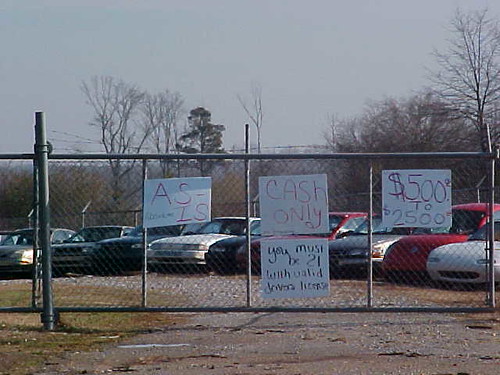
As reported in yesterday’s post, the House Energy and Commerce Committee Chairman Henry A. Waxman, Subcommittee Chairman Edward J. Markey, Chairman Emeritus John D. Dingell, Congresswoman Betty Sutton, Congressman Jay Inslee, and Congressman Bart Stupak reached an agreement on a “Cash for Clunkers” program that will help the auto industry while cleaning our air. This agreement is based on H.R. 1550, introduced by Congresswoman Sutton, and H.R. 520, introduced by Congressman Inslee. The fact sheet published on the Committee’s website offers the following detail:
Consumers may trade in their old, gas-guzzling vehicles and receive vouchers worth up to $4,500 to help pay for new, more fuel efficient cars and trucks. The program will be authorized for up to one year and provide for approximately one million new car or truck purchases. The agreement divides these new cars and trucks into four categories. Miles per gallon figures below refer to EPA “window sticker” values
• Passenger Cars: The old vehicle must get less than 18 mpg. New passenger cars with mileage of at least 22 mpg are eligible for vouchers. If the mileage of the new car is at least 4 mpg higher than the old vehicle, the voucher will be worth $3,500. If the mileage of the new car is at least 10 mpg higher than the old vehicle, the voucher will be worth $4,500.
• Light-Duty Trucks: The old vehicle must get less than 18 mpg. New light trucks or SUVs with mileage of at least 18 mpg are eligible for vouchers. If the mileage of the new truck or SUV is at least 2 mpg higher than the old truck, the voucher will be worth $3,500. If the mileage of the new truck or SUV is at least 5 mpg higher than the old truck, the voucher will be worth $4,500.
• Large Light-Duty Trucks: New large trucks (pick-up trucks and vans weighing between 6,000 and 8,500 pounds) with mileage of at least 15 mpg are eligible for vouchers. If the mileage of the new truck is at least 1 mpg higher than the old truck, the voucher will be worth $3,500. If the mileage of the new truck is at least 2 mpg higher than the old truck, the voucher will be worth $4,500.
• Work Trucks: Under the agreement, consumers can trade in a pre-2002 work truck (defined as a pick-up truck or cargo van weighing from 8,500-10,000 pounds) and receive a voucher worth $3,500 for a new work truck in the same or smaller weight class. There will be a finite number of these vouchers, based on this vehicle class’s market share. There are no EPA mileage measures for these trucks; however, because newer models are cleaner than older models, the age requirement ensures that the trade will improve environmental quality. Consumers can also “trade down,” receiving a $3,500 voucher for trading in an older work truck and purchasing a smaller light-duty truck weighing from 6,000 – 8,500 pounds.
Here is a PDF copy of the Fact Sheet:












